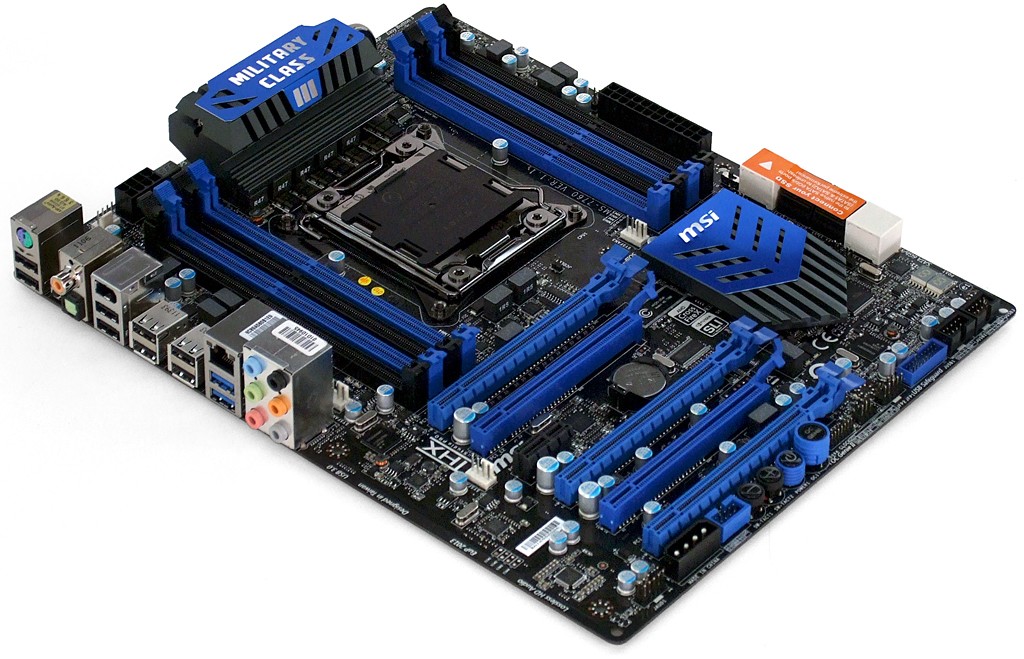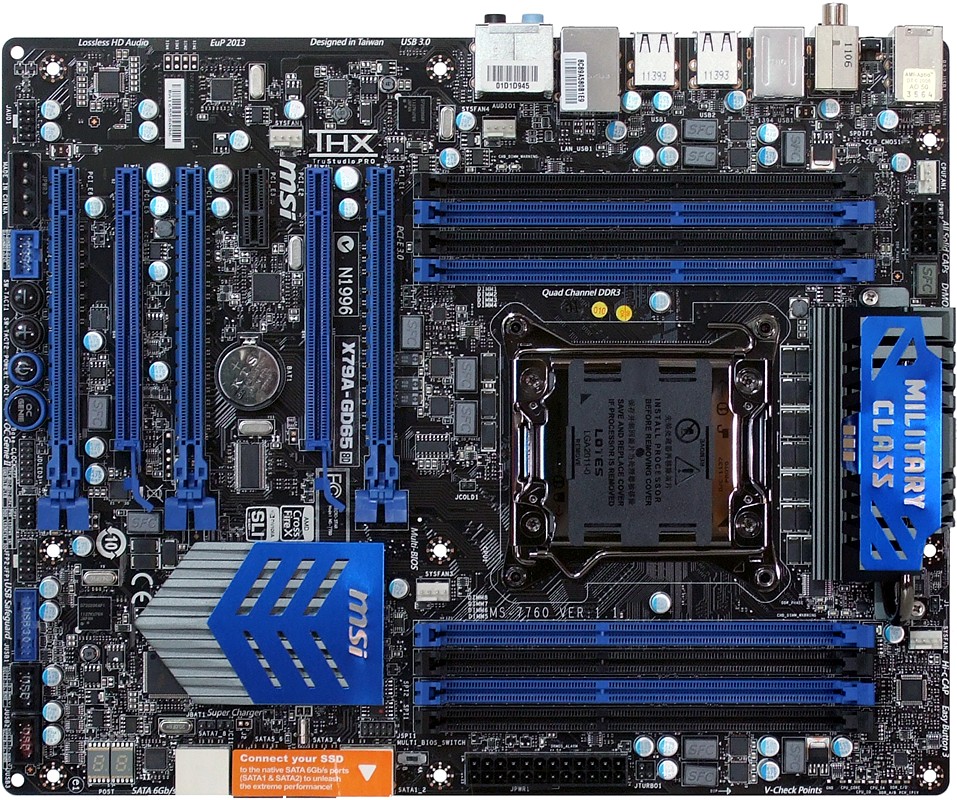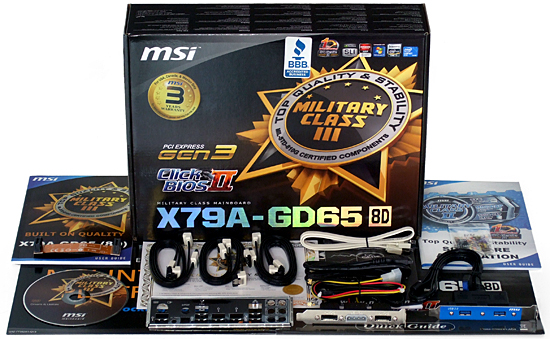Seven $260-$320 X79 Express Motherboards, Reviewed
With 40 lanes of PCIe 3.0 connectivity to host all of our high-bandwidth devices, LGA 2011 certainly qualifies as a premium processor interface. Today we examine seven X79-based motherboards that offer high-end features at a more palatable price.
MSI X79A-GD65 (8D)
Far more than an eight-DIMM version of the –GD65, MSI’s X79A-GD65 (8D) features major PCB design revisions. Granted, some of those changes might have been necessary to clear room for the extra memory slots.
While the I/O panel remains unchanged with a stealthy CLR_CMOS button, eight USB 2.0 and only two USB 3.0 ports, OC Genie, Direct OC, and power buttons have all been relocated to the bottom edge, where they're likely to get hidden under a graphics card in a three-way CrossFireX configuration.
Other than the additional memory slots, there’s very little else added or subtracted from this more scalable motherboard. For example, a BIOS IC selector switch that benefits overclockers who corrupted their firmware is a nice find, but it was already present on the four-slot version of the board. A row of voltage detection points along the top of the front edge is similarly nice, but the cheaper version had a probe holder for this function. Both versions sport an added pair of SATA 6Gb/s ports via a third-party PCIe x1 controller. This enhanced version simply moves the ports down a couple inches.
Worse is that the USB 3.0 front-panel connector placed along the bottom edge limits both motherboard versions to either three-way graphics card arrays or front-panel USB 3.0, since a card won’t fit with the cable installed. That's really our only big layout complaint. Minor issues like the front-panel audio cable located a little too far back along the bottom edge only affects a minority of builders. And though the four-pin supplemental power connector below the bottom PCIe slot typically can’t be used with a card installed, it’s not really needed anyway.
We'll neither pick apart nor praise the two PCI Express x16 slots with different latches, which are only wired up to a single PCI Express lane. If you want to drop a graphics card into either of those connectors for expanded display support, a single-lane slot is probably just fine for 2D desktop needs.
Like ECS, MSI de-emphasizes the X79A-GD65 (8D)’s triple graphics support by not including a three-way SLI bridge. Both companies have the same issue regarding card installation and USB 3.0 header placement, anyway.
We also find six internal SATA cables and, since the board lacks eSATA, an internal SATA to eSATA break-out plate.
Get Tom's Hardware's best news and in-depth reviews, straight to your inbox.



